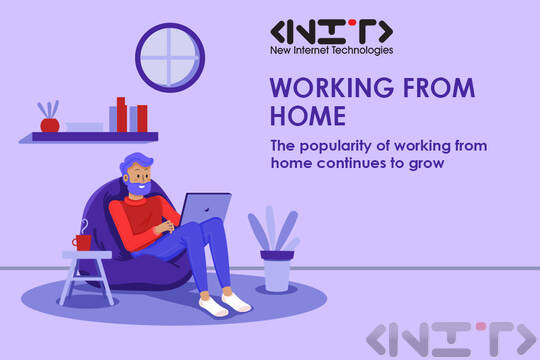
If the beginning of 2020 showed us something, it is that flexible working conditions are neither a luxury nor an advantage that can be denied. For all those who work with digital technologies, teleworking is what awaits us in the future. More and more people accept working from home as a common and normal phenomenon.
Although remote work in many industries was introduced immediately due to security measures taken in different countries, The Guardian and other publications provide for a "permanent change" to work from home or "home office". This view is supported by the results of many studies and research, which show that the popularity of home office is a growing trend that did not occur yesterday.
Companies that have invested in remote work infrastructure may have a unique opportunity to deal with difficulties and risks, such as the current COVID-19 pandemic, which was recently named "the world's largest home experiment" in Time magazine .
Successful interaction of teams whose members do not work in the same office is becoming a common way of working for many companies. At the same time, many convincing statistics have already emerged that show the dramatic changes in recruitment, satisfaction and productivity from remote work. This article provides statistics about remote work that may surprise you.
The popularity of working from home continues to grow over the years.
-
With the increase in the speed of Internet connections, the emergence of increasingly reliable cloud solutions and the change in attitudes towards work-life balance and their own health, remote work has become an increasingly attractive option for employees.
-
In the last 10 years, the popularity of telecommuting has increased to 91% .
-
In 2028, 73% of the teams will include professionals working remotely.
-
One study says that 62% of participants work remotely at least part of the time and only 38% of employees work permanently outside the office.
-
According to Regus forecasts until 2030 flexible working conditions in the US will amount to $ 4.5 trillion.
Working from home can increase a company's competitiveness in hiring staff
Remote work, as Forbes notes, is no longer seen as a privilege. And employees are interested not only in the amount of salary, but also much more. This "more" includes work-life balance, flexible schedules and working conditions.
- 80% of US professionals say they will refuse to accept a job if they cannot work in flexible conditions.
- Meanwhile, in a survey of 880 American experts, 74% of respondents declared their readiness to leave work due to the transition to remote mode.
- By 2030, when all Generation Z representatives enter the labor market, the demand for teleworking will increase to 30%.
- 50% of remote employees plan to start working for themselves one day.
- 34% of respondents say they are willing to give up 5% of income for the opportunity to work remotely.
What do these statistics tell us about the future of the labor market? First of all, they prove that flexible working conditions will continue to be the most important factor that attracts talented professionals.
A PwC study by the International Generational Survey found that many young employees see "work as a phenomenon, not a place." The cloud workspace only reinforces this view and brings flexibility and transparency to everyday processes.
According to employees, working from home is more productive
Less distractions related to communicating with colleagues and using collaborative solutions allow employees to better manage their workload and keep in touch with colleagues.
- The executives of 85% of the companies claim that their productivity has increased "as a result of the increased flexibility".
- In one of Stanford University's experiments, long-term work led to a 13% increase in labor productivity.
- Office employees spend an average of 66 minutes a day discussing non-work-related topics, while employees working remotely spend only 29 minutes talking to such colleagues.
Cloud and digital tools are becoming more convenient and easier to adapt to different work styles. Respondents to the survey confirmed that they reported a reduction in the volume of e-mail and as a result they had to spend less time searching for the necessary information.
And of course, employees say that flexible working conditions improve their health and satisfaction.
And how could it be otherwise? Remote workers spend less time on public transport, spend more time with their families and are less absent due to illness than their office colleagues.
- 75% of telecommunications employees say that working from home has improved the work-life balance.
- 71% of telecommunications employees are satisfied with their current job, while for their office colleagues this figure is 55%.
- 36% of employees are sure that they will not retire if they have the opportunity to work from home or part-time.
- 40% of remote employees say they are not usually "stressed" during the working day.
- 57% of employers say that flexible working conditions increase employee motivation and reduce staff turnover.



